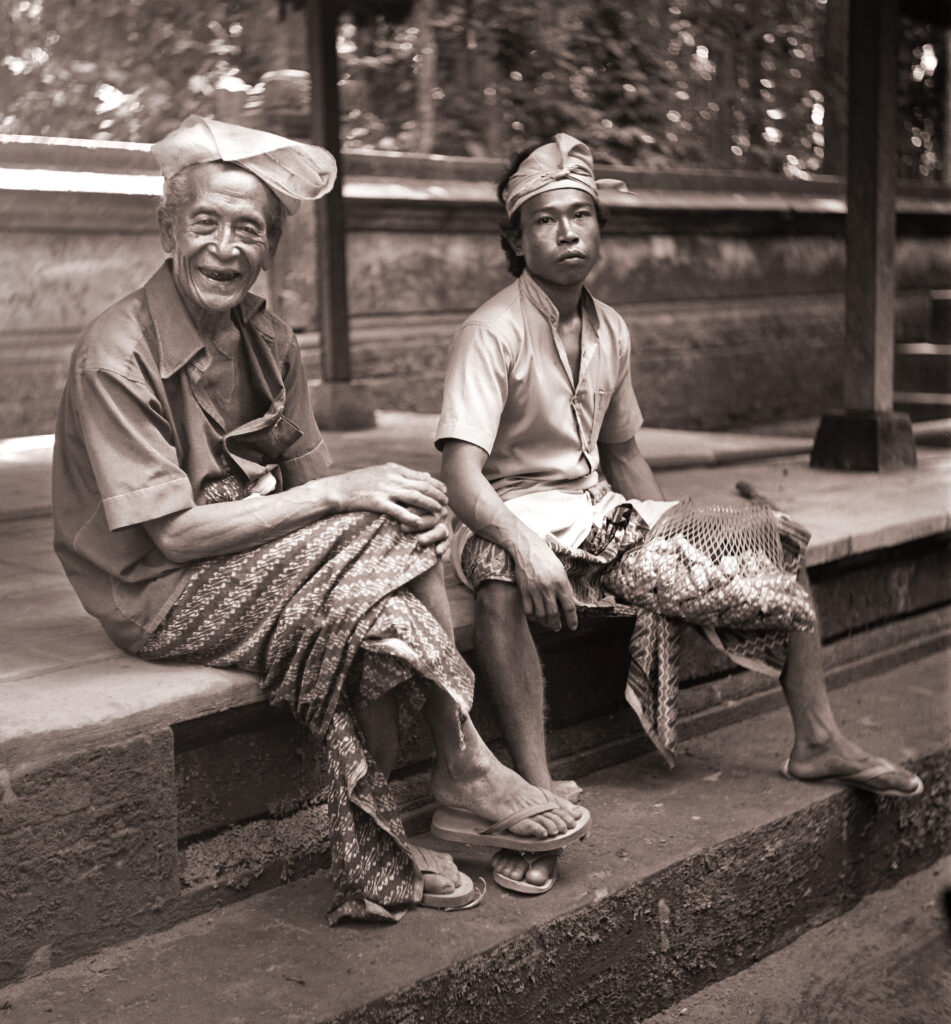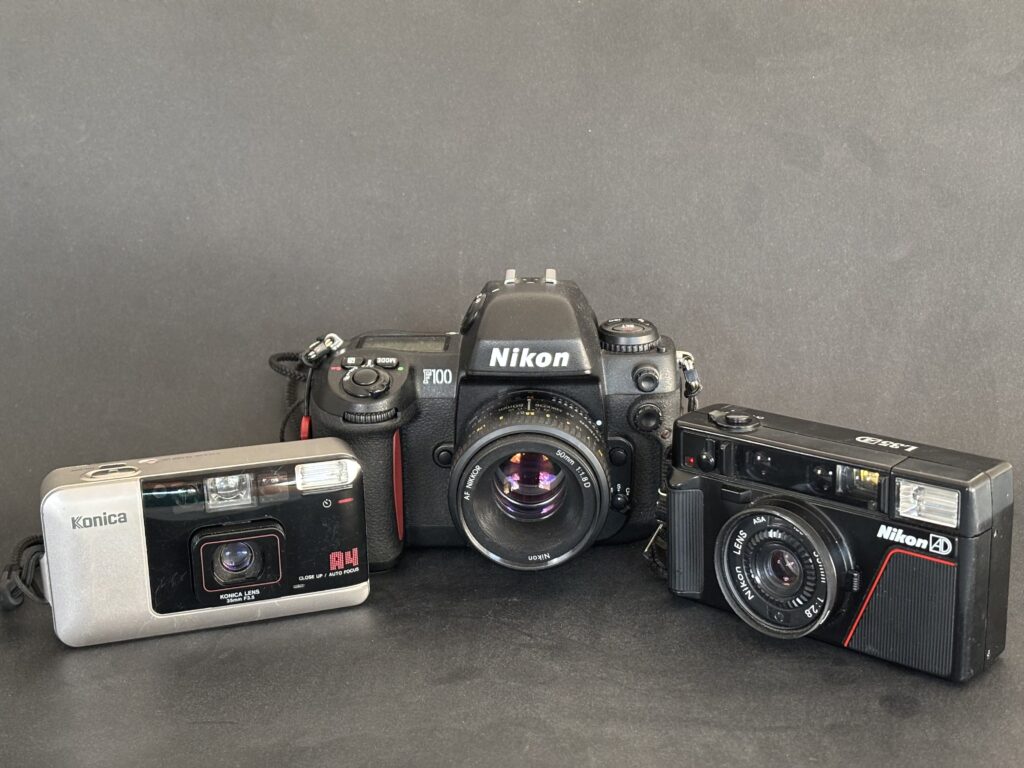Tony Warren’s recent post entitled, “My TLRs Over the Years”, got me thinking about the who, what, where, and how my experiences with TLR’s made photography so intriguing… and why I don’t get the same ‘high’ from digital photography now. Of course, I’m not the same person I was when I got my (used) Rolleiflex at age 16, but maybe if I pretended to be on assignment with a TLR now, at age 72, I could get a bit of a charge. So, I decided to shoot a roll or two every week with a TLR and see if I could recapture my mojo. Let’s begin by asking, “What is mojo?” and where does it come from?
Mojo is an African word referring to a combination of magic, hex, and power. I learned the term from the bluesman Muddy Waters recording of “Got My Mojo Workin’.” The more modern meaning incorporates excitement and positive energy. So…can a camera generate mojo? A crappy camera that feels awful can certainly squash mojo! A great feeling camera that produces wonderful results can promote mojo, but it’s not a magic wand. In my opinion, there’s a reverse Bermuda Triangle needed for mojo to blossom.
- Good camera
- Good collaboration with the subject
- Good photographer attitude
When those three points are present, the void in the triangle stops sucking energy and starts spewing it. That’s Mojo.
This photo of a temple worker in Bali, taken in 1976, gives us a hint of how a willing subject can get positive mojo started.

Human subjects have a story to tell. In this posting, and future ‘TLR Challenge’ postings, I’m going to start with very old images on 120 film and jump to the present. Through this process I hope to revisit old feelings and generate new ones. Here goes:
In 1976 I took an assignment from Garuda Airlines to get some ‘off-the-beaten-track’ photos that would entice tourists to visit Indonesia. They already had loads of beautiful beach shots from Bali, but they lacked a library of photos that showcased the unique and diverse culture of their country. They wanted photos of locals being themselves. I had a reputation for getting close to subjects, so I got the call. The art director said, “Bring your medium format camera. We want people pictures that can be used in travel posters.”
I had no intention of bringing my Hasselblad system to the tropics, so I brought a used Yashica TLR and 80 rolls of film. 50 rolls of Ektachrome for the client and the rest was split between Kodacolor and Tri-X. I delivered the Ektachromes and never saw them again. My processed negatives lay untouched for decades. I dug into the files a year ago. These ‘scans’ are done with a Sony A6000 and Nikkor 55mm macro lens.

My first subjects were in a temple complex in the highlands of Bali. I reached this spot by following a muddy dirt road on a rented motorcycle. I had no idea where I was, and I didn’t care. People were smiling and waving at me. This first day of shooting informed me that Balinese people were friendly and curious. Remember, this was in 1976. Upcountry Bali was not yet overrun by tourists. A young guy with a camera and a smile was entertaining.

Temples are the domain of monkeys. They will tolerate humans to a point, but when you get too close, they get aggressive. This is especially true with mothers and babies. Most jungle primates maintain constant physical contact with their young for two years to protect them from predators and jealous females of their own species. This mother was very tolerant of me getting about seven feet away for this shot. When I moved to my left to get the baby’s face, she bared her teeth, jumped in front of her baby, and took a swipe at me. Fortunately, my Yashica was slung around my neck. Otherwise it would have been knocked into the mud.

Now let’s jump to the present. I chose to photograph Richard Sholer, the luthier that’s repairing my cello. His shop is in Sonora, CA. I used a Mamiya C-33 with a 105mm lens and HP5 film for this shot. Processed in HC-110 dilution B.

Here’s Richard Sholer again. This photo was taken with the Rolleicord on a tripod, of course. HP5 in HC-110. In my mind, there’s no reason to get any sharper than this.

This next photo was taken with the Mamiya C-33 using the 55mm lens. The subject was waiting for his wife at a grocery store in Angels Camp, CA. When I asked him if I could take his photo, he asked, “Where do you want me to look?” It pleases me that most people react well to film cameras. The right side of the image was seriously overexposed and blown out, so I clipped the area and inverted it into a negative. There is no photo that cannot be improved with post-processing.

This gravestone is in Chinese Camp, Ca. The name of the town comes from the hundreds of Chinese workers that lived here in the late 19th century to help build the railway across the Sierra Nevada mountain range. The original shot was taken with HP5 processed in HC-110. Shot with the Rolleicord. I colorized the image in Photoshop.

Here’s one of many locked-up warehouses in Chinese Camp, CA. Rolleicord. HP5 in HC-110. History buffs say these stone buildings housed fireworks, opium, weapons, prostitutes, and dead bodies. I was happy to get an exterior shot.

This locomotive is at the Lumberman’s Museum in Arnold, CA. It was taken during the first snowfall of our winter in late October, 2024. Mamiya C-33 with 80mm lens. HP5 in HC-110.

The last shot of this series is of Clara, the stagecoach driver in Columbia, CA. Taken with the Rolleicord. HP5 in D-76 1:1.

Conclusion: A good camera does deliver 1/3 of the needed mojo.
Share this post:









Comments
Art Meripol on Can You Get Mojo From TLR Cameras?
Comment posted: 03/12/2024
Gotta get my old Mamiya TLR 'MOJO' working, especially after your inspiring shots. Loved the subtle humor too "...dead bodies. I was happy to get an exterior shot." When I got started in photography with a Minolta SRT 101 my then girlfriend had a Yashika Matt 124 and I played with it often. Still have some negatives from it and some 50+ years later they look great.
Comment posted: 03/12/2024
Geoff Chaplin on Can You Get Mojo From TLR Cameras?
Comment posted: 03/12/2024
Comment posted: 03/12/2024
Tony Warren on Can You Get Mojo From TLR Cameras?
Comment posted: 03/12/2024
Comment posted: 03/12/2024
Paul Quellin on Can You Get Mojo From TLR Cameras?
Comment posted: 03/12/2024
Comment posted: 03/12/2024
Philip on Can You Get Mojo From TLR Cameras?
Comment posted: 04/12/2024
Comment posted: 04/12/2024
CHRISTOF RAMPITSCH on Can You Get Mojo From TLR Cameras?
Comment posted: 05/12/2024
Comment posted: 05/12/2024
Hannah Gimblett on Can You Get Mojo From TLR Cameras?
Comment posted: 05/12/2024
Thank you very much for sharing this.
Comment posted: 05/12/2024
Mike McNelly on Can You Get Mojo From TLR Cameras?
Comment posted: 09/12/2024
Comment posted: 09/12/2024